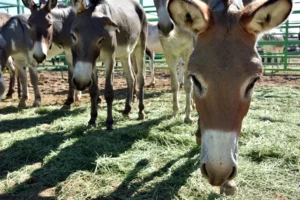Arizona’s diverse landscapes are more than just picturesque vistas of mountains and valleys. Among these natural wonders lies karst, a lesser-known but vital geological feature. Although the term might not be familiar, karst formations like caves, springs, and sinkholes are crucial for both their beauty and their role in providing 40% of the United States’ drinking water.
Karst landscapes are formed when water dissolves rocks such as limestone, creating stunning features like the Kartchner Caverns near Benson, Arizona. These caves, where formations are still actively growing, provide a glimpse into the dynamic processes shaping the land. Other notable karst features include the Devil’s Kitchen sinkhole in Sedona, Fossil Creek springs in the Coconino National Forest, and the colossal Tonto Natural Bridge, the world’s largest natural travertine bridge.
Unveiling the Subterranean World
Karst landscapes resemble a natural “Swiss cheese,” with rain and snowmelt seeping into the ground, dissolving rocks, and forming underground drainage systems, caves, and aquifers. An example of this can be experienced firsthand at Kartchner Caverns, where the high humidity level is maintained by the aquifer below, allowing the cave’s formations to continue growing.
The Importance of Karst Conservation
Karst terrains, while excellent for water movement, are vulnerable to environmental changes like drought, pollution, and human activities such as construction and mineral extraction. These factors can deplete aquifers, cause sinkholes to collapse, and contaminate groundwater. Once damaged, these systems may not fully recover, emphasizing the need for careful conservation.
Beyond their hydrological significance, karst environments hold valuable scientific information. Caves serve as natural archives, revealing Earth’s geologic and climate history through mineral formations and sediment layers. Research at Kartchner Caverns has unearthed ancient remains such as the 86,000-year-old Shasta ground sloth and a 34,000-year-old horse, providing insights into past ecological conditions.
The stable conditions within caves also make them ideal for studies across fields like astrobiology, meteorology, and medicine, offering a wealth of information about the natural world.
Karst landscapes also offer cultural and educational value, preserving archaeological sites and inspiring curiosity. Tours through caves like Kartchner Caverns not only highlight natural beauty but also foster a deeper understanding of geology and the importance of preserving these natural resources.
Celebrating Hidden Marvels
National Cave and Karst Day, observed on June 6, celebrates these hidden landscapes, emphasizing their exploration and conservation. However, any day is a good day to visit these wonders. A tour of Kartchner Caverns is a memorable journey into another world, offering a firsthand look at why these features are invaluable and worthy of protection.
Read More Here








Be First to Comment